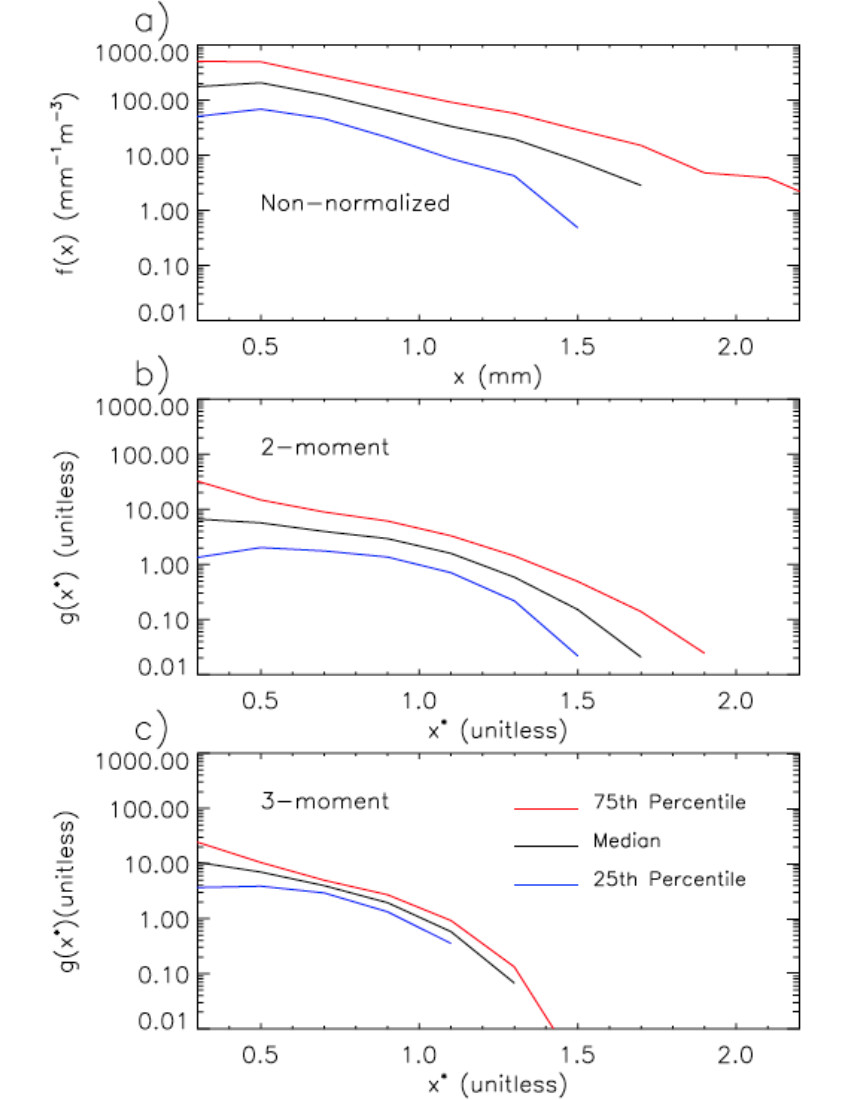Characterizing fundamental scaling relationships of raindrop size distributions
Submitter:
Morrison, Hugh Clifton — University Corporation for Atmospheric Research
Area of research:
Cloud Processes
Journal Reference:
Science
A new method was developed to describe the variability of raindrop sizes in precipitation. This approach eschews many of the a priori structural assumptions in existing methods, instead using general mathematical relationships to describe the scaling behavior of the relative proportions of small and large drops. These were then applied to data from ground-based Atmospheric Radiation Measurement (ARM) disdrometer observations and a detailed rain microphysics model, which confirm the applicability of the scaling relationships.
Impact
The distribution of drop sizes within a population of raindrops is critical for understanding bulk microphysical process rates like evaporation. The scaling expressions derived in this work can be used to improve the representation of these processes in bulk microphysical schemes. They can also be used to develop retrievals of unknown bulk quantities from a set of directly measured bulk quantities: for example, drop number concentration from bulk projected drop area and radar reflectivity. This method provides not only the best estimates of the retrieved unknown quantities, but also rigorous estimates of the uncertainty, which typically is missing from existing approaches.
Summary
In this study, general scaling expressions for raindrop size distributions were derived from basic mathematical principles. Any “moment” of the distribution, which is a weighted integral of the distribution over drop size, was related to a set of reference moments using generalized power expressions. These scaling expressions are similar to those derived in previous studies, but in contrast to those previous studies were derived from basic mathematical principles while relying on few a priori assumptions. Also, in contrast to previous studies, these scaling expressions are applicable to any number and combination of reference moments. The expressions were applied to a large set of data obtained from ARM disdrometers at various sites around the world, including long-term ARM sites in the Southern Great Plains, Eastern North Atlantic, and Tropical Western Pacific, and field campaigns in the Indian Ocean and Finland. A detailed microphysics model that explicitly evolves the raindrop population provided additional data. The data well conformed to the scaling expressions. It was shown that nearly all of the variability of the raindrop population (94% of variance on average) could be explained by three bulk “measures” of the drop population, such as water content, number concentration, and radar reflectivity. Thus, in general, three degrees of freedom appear sufficient to explain the characteristics of raindrop populations. Best estimates as well as estimates of uncertainty from the scaling expressions were derived for numerous combinations of unknown moments and known reference moments, with implications for multi-instrument rain retrievals.


